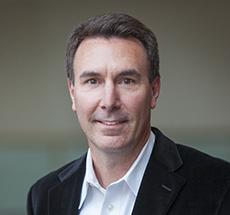
In the last few years, we’ve seen legislation for the disposal of pharmaceuticals on the state and federal level grow due to our nation’s opioid crisis. One of the most recent rules we’ve seen is the Management Standards for Hazardous Waste Pharmaceuticals. In February 2019, the Environmental Protection Agency published the long-awaited rule in the Federal Register, which will help establish cost-saving, streamlined standards for handling hazardous waste pharmaceuticals.
Not only will these new standards help how the healthcare sector operates, but it will better protect the health of individuals and the environment. Annually, it’s estimated up to 2,300 tons of pharmaceuticals are disposed of down the drain. The EPA predicts that by enacting this new rule, it will reduce the amount of hazardous waste pharmaceuticals entering our waterways. This new rule will prohibit long-term care facilities from dumping pharmaceuticals down the drain, making our drinking and surface water safer and healthier.
This new rule will significantly change how the healthcare sector manages their hazardous waste pharmaceuticals, eliminating existing regulations that have been in place for decades. Not only is it important for facility managers to be aware of these changes, but to also understand what it means for their long-term care or healthcare business. Failure to do so could be a costly mistake, as well as a risk the public’s health and environment.
What is considered hazardous waste?
The EPA defines hazardous waste as “waste with properties that make it dangerous or capable of having a harmful effect on human health or the environment.” Once an item containing hazardous properties is no longer usable, it is deemed hazardous waste.
The EPA regulates hazardous waste under the Resource Conservation & Recovery Act to ensure these wastes are managed in a compliant manner. RCRA mandates that generators of hazardous waste, such as long-term care and other healthcare facilities, are responsible for waste from the time of generation to the final destruction. RCRA also sees that these wastes are managed in ways that protect human health and the environment. Generators of hazardous waste are regulated based on the amount of hazardous waste they generate in a calendar month, not the size of their business or facility.
Hazardous waste items have ignitable, corrosive, reactive or toxic characteristics. To determine whether a product is considered hazardous waste, review its safety data sheet, manufacturer information, label and ingredients. Specific guidelines provided by hazardous management service providers can also be referenced.
Common types of hazardous waste pharmaceuticals found in long-term care and nursing homes include, but aren’t limited to:
- Aerosols
- Insulin
- Multivitamins
- Some blood thinner medications
- Some Drug Enforcement Administration (DEA) controlled substances
What are the changes?
One of the biggest changes from the final rule is that it mandates long-term care facilities to follow the requirements set out by RCRA. These requirements regard the generation, management, storage, treatment and disposal of hazardous wastes. While the final rule does not increase the number of pharmaceuticals considered to be hazardous waste, it does include many changes that will impact long-term care and healthcare facilities. Some of these changes include the following:
- Eliminates “sewering” of hazardous waste pharmaceuticals. Reducing intentional sewer disposal is one mechanism to help reduce the environmental loading of pharmaceuticals into our nation’s waters.
- Provides regulatory clarity on how pharmaceuticals must be managed. These new regulations eliminate the dual regulation of RCRA hazardous waste pharmaceuticals that are also DEA controlled substances. The new rules also maintain the household hazardous waste exemption for pharmaceuticals collected during pharmaceutical take back programs and events, while ensuring their proper disposal.
- Offers regulatory relief to healthcare facilities for management of hazardous waste pharmaceuticals. The rule outlines that hazardous waste pharmaceuticals do not count toward generator status, eases labeling and manifesting and clarifies what wastes should be shipped to reverse distributors.
- Amends the listing of nicotine patches, gums and lozenges. These items no longer have to be managed as hazardous waste.
What happens I don’t comply?
There are many repercussions for improperly handling hazardous waste pharmaceuticals at any given time. Facilities that do not understand federal, state and local regulations can face environmental, health and safety risks, including water contamination. In addition, non-compliance fines levied against the healthcare sector have risen in recent years, making facilities today face the risk of significant monetary penalties for non-compliance. While the financial burden of non-compliance is significant, the negative impact these public fines have on brand perception can be even more damaging.
What’s the bottom line?
State-by-state adoption of the Management Standards of Hazardous Waste Pharmaceuticals will be a long process with varying timelines and outcomes as states have the ability to be more stringent. The rule will go into effect in Alaska, Iowa and Puerto Rico on Aug. 21, 2019. Other states will have until 2021 or 2022 to adopt the new rule. This is because each state has their own version of the EPA and can adapt the rule accordingly.
Management personnel are encouraged to seek help from a third-party vendor to not only help dispose of hazardous waste pharmaceuticals, but to also serve as a compliance expert. Using a vendor can help make sure facilities are up-to-date in regulatory changes and its deadlines.
While there might be some time to adapt to the new rule, it’s important to be aware of these upcoming changes and even start implementing it sooner rather than later. Putting best practices in place now can help eliminate waste streams and better ensure the safety of patients, employees, the environment and the facility’s overall brand.
Wade Scheel is the director of governmental affairs for Stericycle Environmental Solutions, a leading provider of environmental and regulated waste management solutions.




